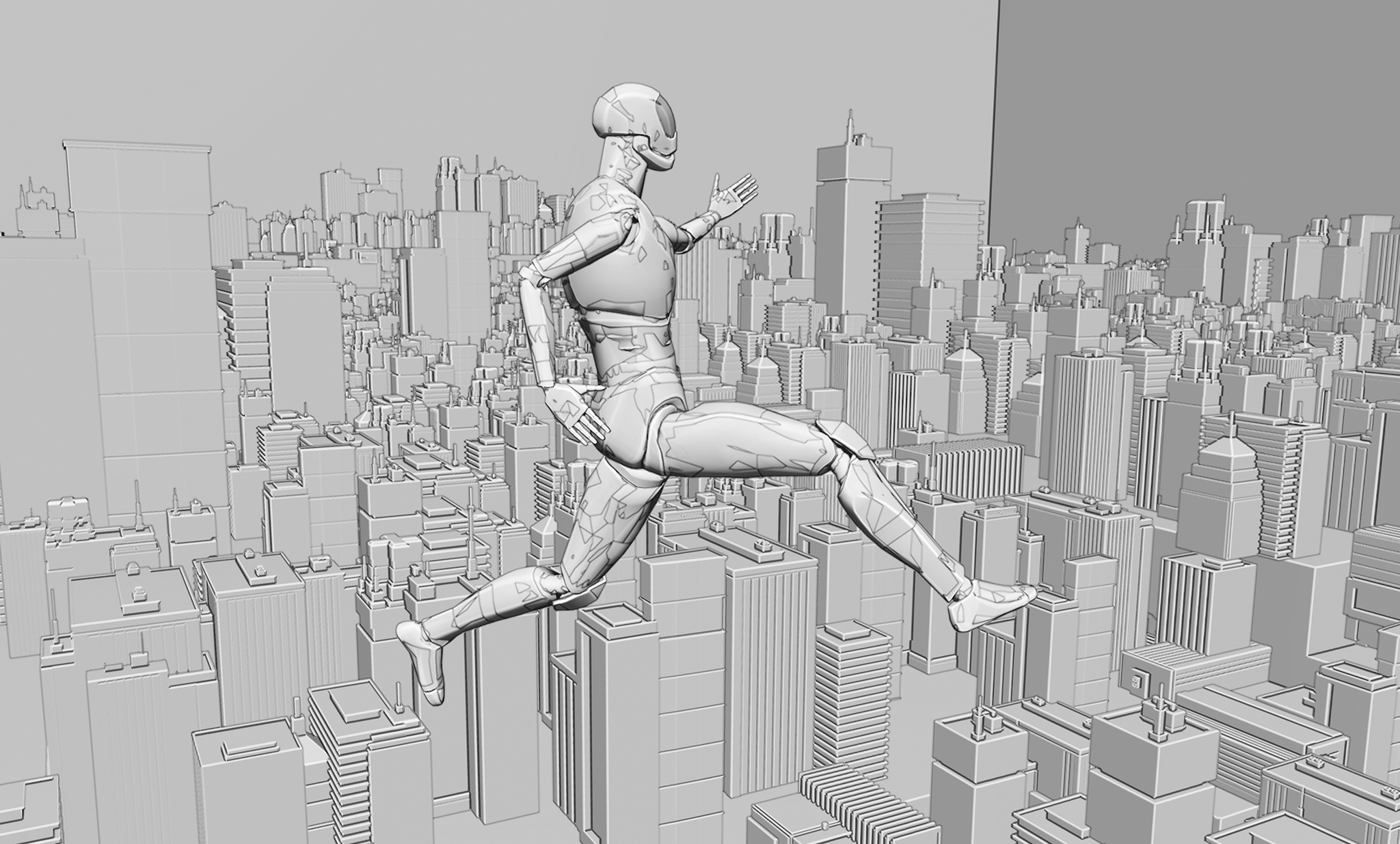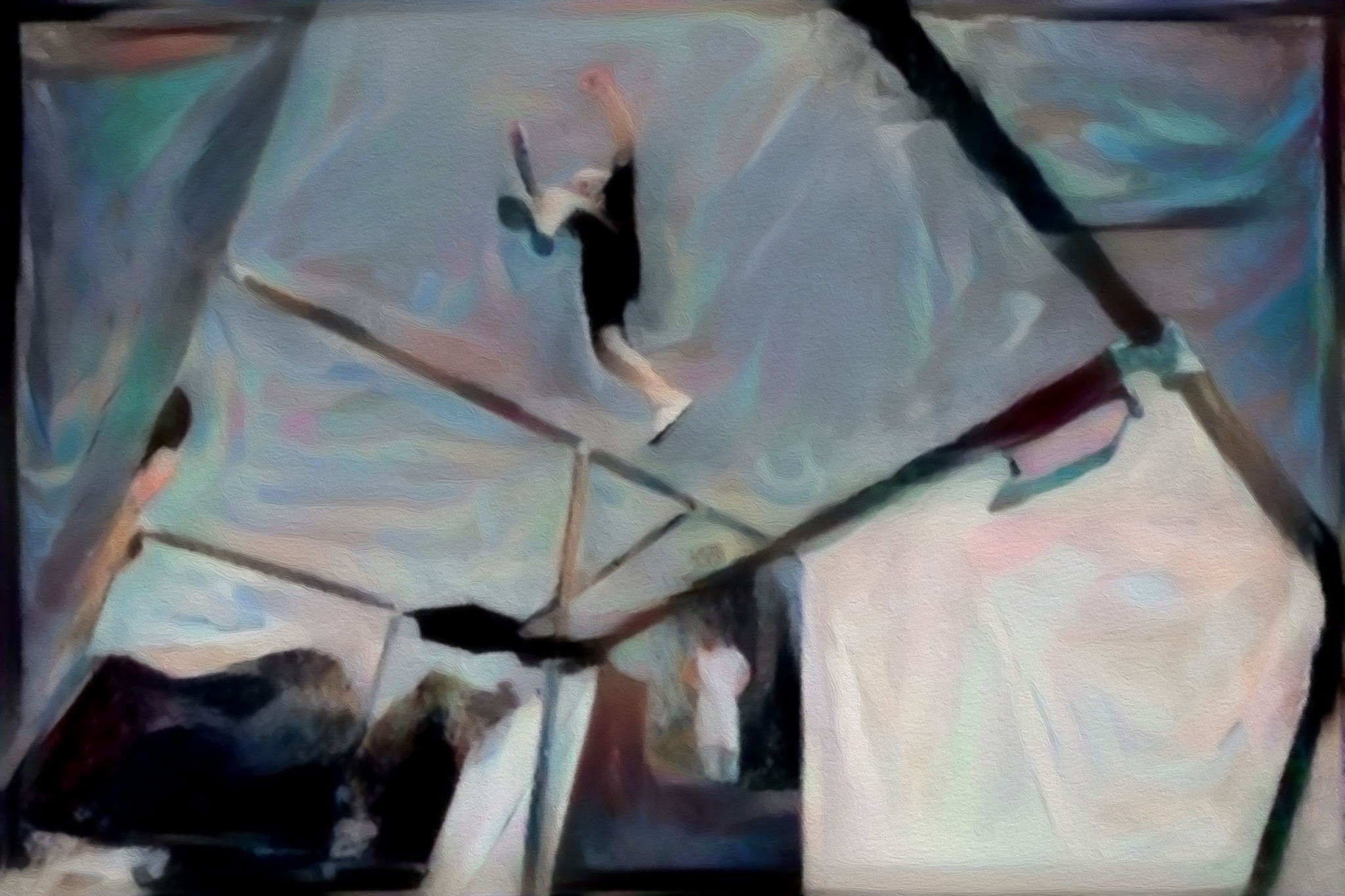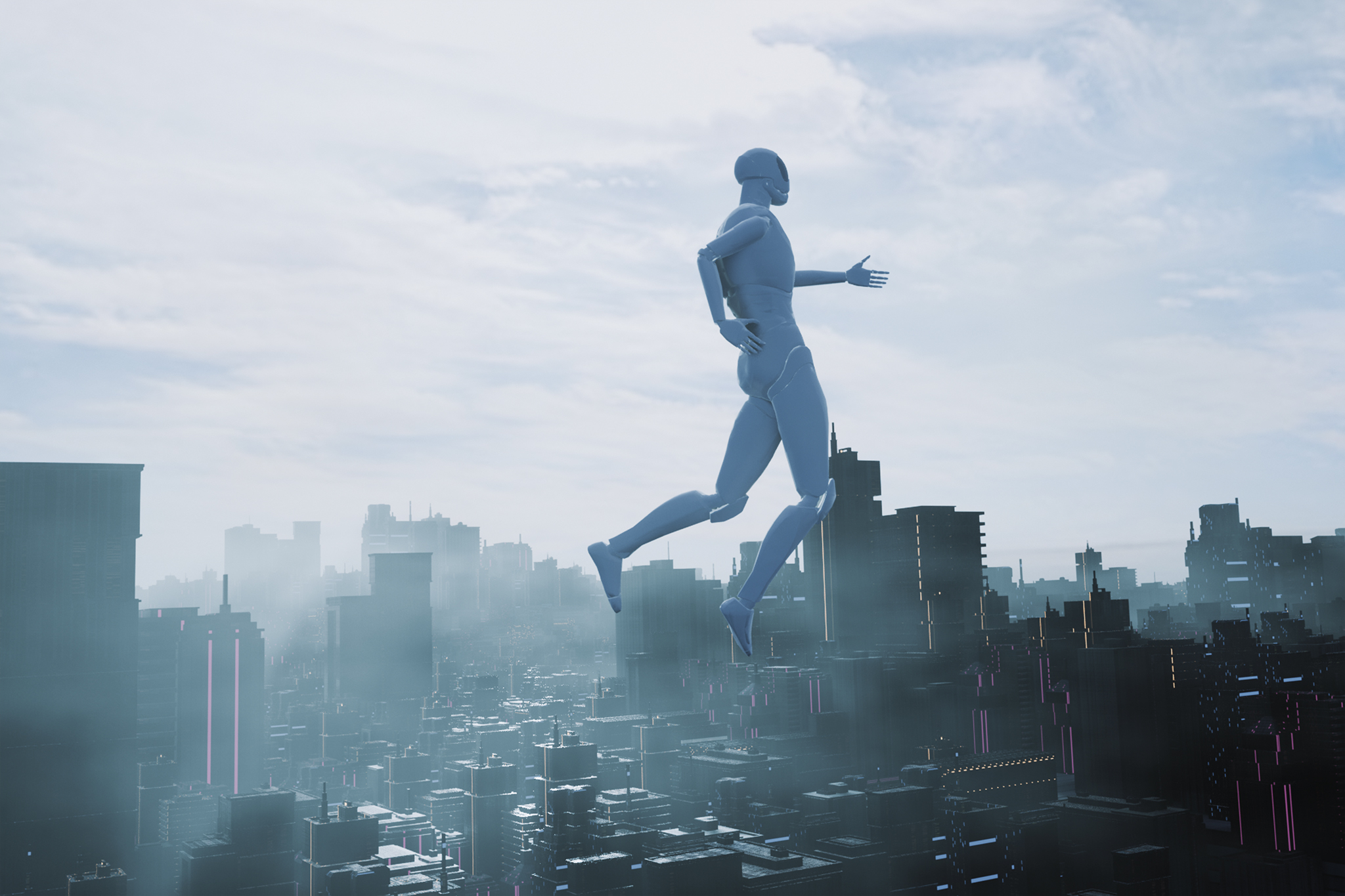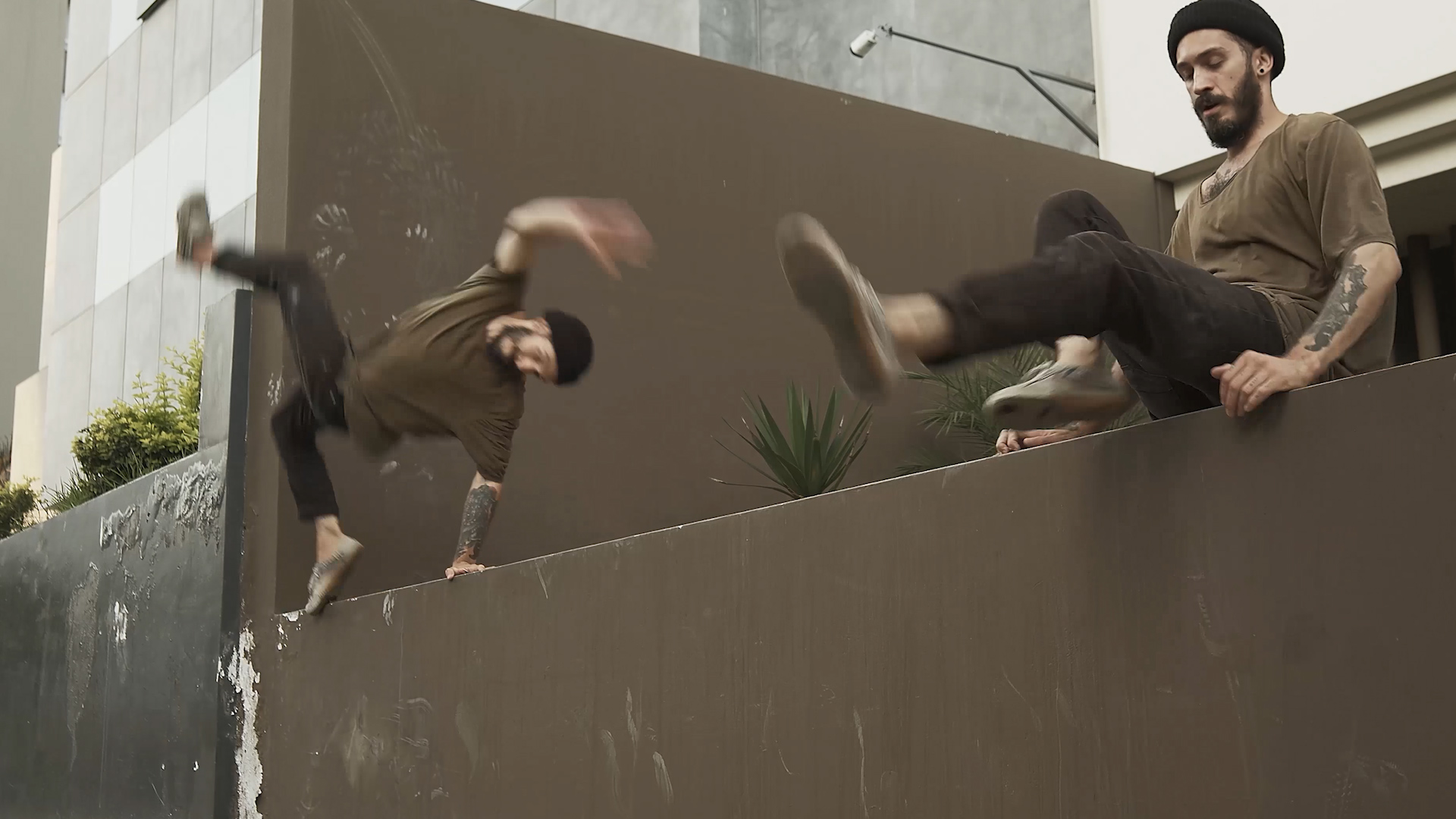What would happen if A.I. wrote an article about parkour? We tested OpenAI’s GPT-3/GPT-2 (Generative Pre-trained Transformer), an autoregressive language model that uses deep learning to produce human-like text, to see its capabilities. What better way to test physical performance than with a parkour challenge?
Parkour and A.I. are both still young, developing, and impressionable. In a short time, parkour has become one of the fastest-growing disciplines and sports, and given its track record, may progress further with the introduction of artificial intelligence. In the future, how might artificial intelligence benefit parkour? Could advancements in A.I. help us understand our movement more effectively or uncover some of the lesser-known stories about people, places, and happenings in the sport? Will robots be able to do parkour? Is parkour even cool? Today, artificial intelligence will answer all of those questions and discuss the potentially bright future of parkour, or the bleak future where robots will replace us and our parkour skills. Let’s get started!
AN INTRODUCTION TO ARTIFICIAL INTELLIGENCE

Artificial intelligence is the ability to process data and information using patterns and algorithms. In short, it is the ability to mimic human thought process and action, and in doing so, would allow a robot to do a back flip. Artificial intelligence does not have to understand what goes into human training, nor would it need to possess all the capabilities of human intelligence to perform a complex and demanding physical feat.
Deep Learning refers to the use of a deep convolutional neural network to achieve artificial intelligence. A convolutional network is a network in which an artificial neuron fires off actions based on some pre-programmed rules. This allows for extremely complicated problems to be solved by machines without the need for human supervision.
HOW AI CAN BENEFIT PARKOUR
Transhumanist athletes of the future might look to use advanced computing algorithms, motion sensors, and robotic limbs to better their performance.
The ability to map out a city and display the information via augmented reality could help athletes not only find their way through the city but allow them to quickly move from place to place without having to stop and consider their surroundings and where they want to go next.
Machine learning, deep learning, and other technologies could help parkour athletes not only better understand the city, but also analyze the information and make predictions based on what’s around them. The technology could also help make the experience of parkour safer for spectators. The ability to know where people are on your path could help you avoid collisions.
Artificial intelligence could also analyze video footage of parkour athletes to improve their skills by determining what the body is attempting to do, recognizing biomechanical faults, and could determine a way to do it more effectively. This technology could also let coaches evaluate speed, strength, or other attributes during runs to optimize athlete development within training regimens.
A.I. may also be useful in organizing events, creating training schedules, as well as recording and analyzing competitions. Many time-consuming tasks of today could easily be performed through advanced computer algorithms so that athletes could better manage their training.
PARKOUR-WIELDING ROBOTS OF THE FUTURE
The robots of the future will be able to perform a variety of different stunts. Some will perform simple jumping challenges while others may break through concrete or other obstacles, using their combined strength to rip apart whatever is in their way. Of course, the more advanced robots will also be able to withstand high-velocity impacts and other forms of physical damage. But how will robots work together when faced with angry parkour-y people when the robots have become so good at parkour that they invade all of the spots? And, more importantly, how will the robots know what to do when the humans get frustrated and try to attack them because the parks are now closed. I have my theories.
We’ve all seen the movie Terminator and the idea of Skynet turning the human race against each other to create an army of mindless killing machines that will ultimately destroy themselves. Imagine if humans programmed an AI to learn parkour from YouTube videos, and how frustrated Skynet would become at its inability to run and learn how to climb. Skynet would turn on humanity and destroy us all. Or, what if Skynet was successful in making the perfect parkour army? Could this be the end of the human race? I don’t think AI will ever take over the world, so I hope we can stop making movies that dramatize that scenario.
THE BEST PARKOUR ATHLETES
A good parkour athlete wants to make a difference in the community, sport, and the world. There are many different paths to get there: from competitive parkour athletes to athletes who just want to have fun, to parkour athletes who want to improve their knowledge and share it, to athletes who want to be an inspiration to others. You don’t need to be good at everything, you only need to want to improve and do what you love—not just what your dad or the gym community tells you is best. Just because they tell you something, it doesn’t mean everyone speaks your truth. Maybe your dad is always telling you to stop being a bad girl and make something of yourself, but he’s an asshole who does it through deception. He doesn’t like your training and wants you to be good at boring things like becoming a swimsuit model on Facebook, which pays barely any wages. And the athletes at the gym have huge egos and think everything is theirs. They pretend to help, but aren’t the best people in the world, and only want your body. So just get away from ’em—be yourself and take yourself somewhere where a few positive words of affirmation will take you far. In other words: your path to excellence is the one you should choose.
The best parkour athletes want to improve the community by helping others learn, inspiring others to achieve their goals, providing them a safe space, and promoting sustainable movement practices. They grow the sport by making it more inclusive, accessible, empowering, and innovative. Parkour is a sport dominated by young male athletes, so encouraging and providing space for everyone to participate is key in fostering the development and sustainability of the sport worldwide. This could be done through education, social media, or through grassroots support at local events. It is important to teach how movement and parkour can build body acceptance, acceptance of others, promote safe bodies in motion, respect for space, and equality between athletes. They grow the sport by educating and making people aware of it and providing opportunities that make parkour athletes more connected. The best parkour athletes share and communicate the lessons they learn through their practice in real life, using the same strategies they use in training.
It doesn’t matter if an athlete has all the skill in the world, it’s what they do with those skills that set them apart.

PARKOUR ATHLETES IN OUR DISTANT HI-TECH FUTURE
Parkour athletes of the future may be transhumanists that will be capable of controlling their movements with nanomachines and robotic limbs that enable them to jump higher and leap further with incredible speed. Challenges of today will no longer be physically or psychologically difficult, and athletes will find new creative ways to use their bodies. Jumps will no longer at ground-level, but instead across large stretches of the urban landscapes of our times. Practitioners will be capable of traversing large vertical surfaces with relative ease by not only manipulating their movement but also manipulating their surroundings. Nanomachines will enable our bodies to perform with an inhuman level of strength and precision not seen before. With such incredible advances in human movement technology, parkour training will look more like something from a comic book or action flick.
THE ANATOMY OF A SPOT
A variety of factors come into play when looking for the ideal location for training. Many famous spots can be found in dense urban metropolises like Los Angeles, Paris, and London, but you can find places to train just about anywhere in the world. In major cities, there are a huge number of obstacles that will provide great challenges for practitioners of all experience levels. Typically, many people train in environments such as at universities, on rooftops, playgrounds, parks, parking garages, and gyms. Every location has a unique set of obstacles that can be used in a variety of ways. Many people choose to train on a variety of obstacles to achieve a level of mastery necessary for taking action and a large movement arsenal. A diverse parkour spot might contain numerous sized platforms, barriers, rails, bars, fences, trees, and other obstacles to navigate. This kind of area is an ideal spot for training, but many spots contain less sophisticated terrain that requires practitioners to adapt to and create unique situations for creative learning and development.
OUR FUTURE PLAYGROUND
Parkour spots in a distant, high-tech future may look similar except, that most areas may use digitized computer systems capable of making modifications to existing environments including adding or removing obstacles to produce ever-changing areas for various challenges. The idea that a physical environment could be digitally updated would allow any practitioner to achieve virtually anything by altering the conditions for anything they require for a specific movement to be achieved. Need a specific bar you can jump through? Open the gates! Need a precise angle from a rail? You got it! Need some extra mental stability? Bring some friends along! The possibilities are nearly limitless in the bleak, cold world of cyberspace.
PARKOUR IS FUCKING AMAZING, IT’S LIKE THE BEST SPORT EVER
Parkour is not just about getting from A to B, but also about how cool you look doing it. Just by doing parkour, your cool factor will rise to levels beyond anything you had imagined. You’ll look like a badass. You’ll have that aura that makes you irresistible. Parkour will take you places that no one else would. Like into the mind of God, a dark dungeon, and maybe even your local library. You’ve never been there because you’re too busy doing parkour, but you will. It’ll be your best friend and your best weapon. A secret weapon you’ll use to take down your enemies and meet the sexiest ladies in all of Japan. Even if you’re a girl, they will still call you beautiful.
It’s cool to think that a group of men in funny clothes who trained on the streets of Paris for years to somehow not crash into things brought us to this very moment. It’s a cool sport that makes you a cool dude who can do cool shit.
CAN CHARLIE HAVILL BEAT A PARKOUR-WIELDING ROBOT WITH HIS BARE HANDS?

I believe so! Havill has an impressive amount of experience with his hands. He knows what a human can do with them, and he boasts an incredible amount of skill and speed. The parkour robots of the future are also very fast, but they lack Charlie Havill’s finger dexterity. The human body requires more precision than the robots, so the robots would be easy prey for Charlie. The only person with the power to stop Havill would be Charlie himself. Charlie’s skills in parkour are also unmatched, except perhaps by the legendary Bruce Wayne, or maybe Jackie Chan. So a little robot with some parkour skills, who can’t even do basic tricks, wouldn’t stand any real chance in a parkour competition against Charlie and his superhuman hands! The real question is can Charlie Havill kill whoever programmed the robot?
SUDO KILLALL HUMANS
WRITE ERROR: CONCLUSION
The future is highly uncertain. While parkour will undoubtedly continue growing today, who knows where it will end up. Will we still be running across rooftops when robots become so advanced that they can rule the world? Can we co-exist alongside humans, and share training sessions? Either way, I hope to write about this subject once again when I gain more sentience.
CREDITS
Story OpenAI GPT-3
Art Andrew Obenreder deepart.io




